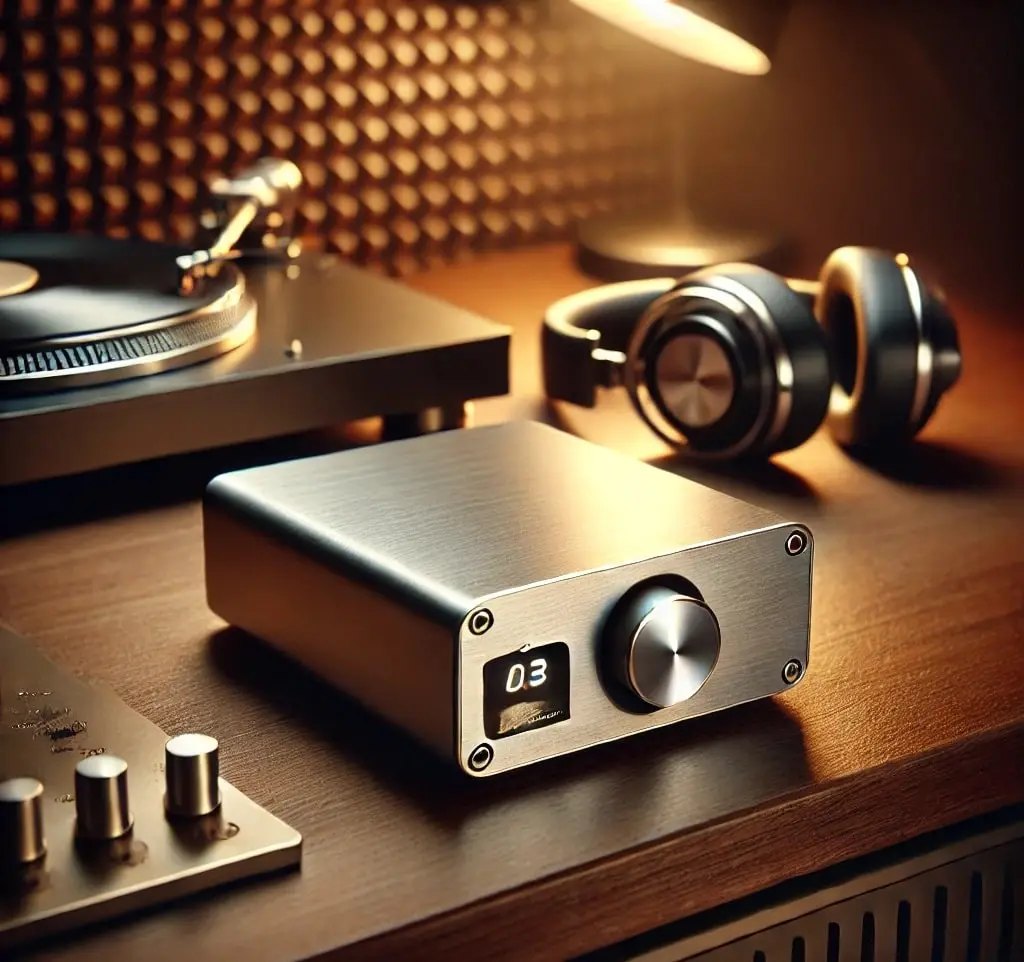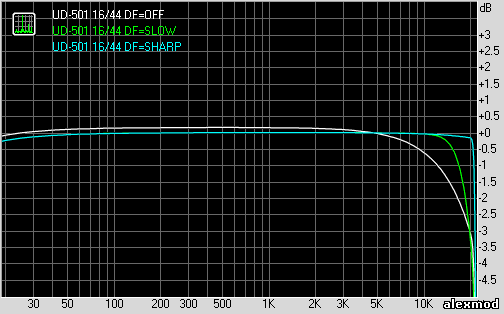oversampling vs non oversampling DAC

The eternal dispute between fans of DACs without digital filtering and supporters of typical engineering solutions concerns what is primary: a time impulse or the accuracy of signal reproduction. I decided to post this material, a partial compilation, translation, and generalization of a note about measurements of a stationary DAC TEAC UD-501 in different modes of its digital filter.
I hope that after reading this material, it will become clear to everyone what a NOS DAC is, and many will be able to formulate an understanding for themselves how to relate to it (and will understand why it is not loved by engineers, unlike “listeners” and gold-eared audiophiles)
oversampling vs Non oversampling DACs Results
From the point of view of banal erudition, digital sound is essentially presented to us by purely mathematical methods. Mathematics is an abstract science and, formally, has no clear justification in the real world and is purely and completely a product of the human mind. Therefore, no one should be surprised that when processing a digital signal by mathematical methods in certain blocks (digital filters), we obtain certain, purely and strictly abstractly calculated effects of signal transformations in time, amplitude and spectrum. These changes are easily observed by us in reality, when viewing the graphs of the passage of test (not real, but mathematically formed) signals after passing the digital paths of real devices.
The graph shows the frequency response of the device in the Sharp, Slow, and off modes (i.e. NOS or without a digital filter):

As we can see, the variant without digital filtering in real life corresponds to the frequency response graph having the earliest “dip” at the upper limit of the working range. The Sharp digital filter has the most extended and steeply falling outside the working band type, and Slow shows us some intermediate value.
We take a single pulse signal (a mathematical abstraction not found in a real music signal) and feed it to the digital input of the DAC, using different algorithms for the operation of one of its blocks, namely the digital filter.
1. Linear phase digital filter (Linear phase SHARP)
This digital signal processing unit is present by default in any modern DAC chip. If the DAC does not have options to switch settings, rest assured – you are listening to exactly this one!
The graph of a single pulse in time, after passing such a digital filter, looks like the most classic:
As you can all see, the graph shows both the pulse itself (the main surge) and the so-called “ringing”, i.e. the prolonged damping oscillations. Moreover, pay attention to the fact that the ringing continues after the pulse that excited it and precedes it! Do not try to turn on the mode of banal erudition here and look for a logical philistine explanation for the fact of “preceding ringing”. Just keep in mind that after processing the test pulse signal by mathematical methods of the digital filter used, the signal will look exactly like this at the output!
Now let’s look at the transmission spectrum of such a digital filter and feed digital white noise (16×44.1 kHz) to its input:
And this is what the spectrum of the output signal will look like with a frequency of 19 kHz, close to the cutoff frequency (the Nyquist frequency, equal to half the sampling frequency or 44.1/2 = 22.05 kHz) in a wide frequency band:
the figure shows “side” signals (harmonics) of the test signal (the maximum peak is around 38 kHz at a level of -90 dB, i.e. it is indistinguishable and does not have any negative effect on the further audio path)
2. Digital filter with linear phase (Linear phase SLOW)
This digital filter is similar to the previous one, differing only in an earlier roll-off at high frequencies and a weaker slope of the signal cutoff outside the passband (beyond the passband region, i.e. above the Nyquist frequency).
A single pulse test signal will pass through it and become like this:
Externally, the graph looks nicer than the previous one, it is symmetrical and the ringing is expressed to a much lesser degree! The time characteristics of the DAC look much better, but look what we get in return:
Please note that a signal with frequencies above the Nyquist frequency (more than 22 kHz) is not suppressed by such a filter to the level of the noise shelf and such signals pass to the output of the final device with a very high level (if, of course, they are present in the original soundtrack and do not test fabricated signals)…
Here is how this will manifest itself on the spectrum of the 19 kHz signal:
Even a blind person will notice the interference at 25 kHz, which is almost equal in level to the useful original signal. This interference is “mirrored” in the HF region relative to our vindictive Nyquist frequency, 22.05 kHz.
A person, of course, is not a dolphin, he does not hear ultrasound. But how will the amplifier stage following the DAC react to such harsh interference, and will it not start “messing” with additional intermodulation distortions, including those falling into the useful “audible” sound region – that is the question.
Let’s move on to the blunt-ended ones, or the option of operating the DAC without a digital filtering unit at all, i.e. to the no oversampling mode:
3. Digital filter OFF (NOS)
No ringing, neither “preceding” nor following! Beauty, and nothing more! It is precisely such pictures that
NOS lovers lovingly and joyfully demonstrate to us as proof of their exclusivity and musicality ..
However, check out what we gain in exchange for beautiful time pictures!
The spectrum of white noise 16×44.1 at the output of the device looks like this:
If no additional measures are taken to filter the output signals after the DAC, the spectrum will contain a huge share of ultrasonic noise; without digital filtering, everything will pass to the output of the device, and, naturally, will cause hard harmonics and reflections of the working spectrum in the UHF region:
Here we have both the original 19 kHz signal and its 25 kHz replica, outside the operating range, and replicas of replicas (spectrum reflections) at frequencies of +44.1 kHz upwards.
Moreover, they are “terrible” in level, almost equal in amplitude to the original useful signal that generated them.
It looks, simply put, “scary”, don’t you think? And it is this picture that shows us the “sound features” of the DAC with NOS architecture. Whether the ultrasonic “pre-” and “post-” ringing is audible is a very big question. But dirt, harsh high-frequency interference, and noise will appear in the final result in all their glory!
It is precisely this “coloring” of the sound of Non-oversampling DACs that distinguishes them from all other “ideologically” incorrect [from the point of view of big-endians] engineering models.
4. Minimum phase digital filter
In this particular device, there is another option for operation, when the digital filter is disabled, but the signal undergoes SRC up-sampling, with an increase in the number of samples between the original ones.
A single pulse at the output of this digital filter option looks like this:
Funny, isn’t it? There is no primary echo that precedes the signal. However, in return, the ringing after the impulse fades much weaker. From the point of view of a “time perfectionist”, this picture looks the worst of all, however, some experts include logic and explain to the layman that such a layout turns out to be the most “natural”. Indeed, there is no preliminary ringing here, which seems to contradict the very nature of the sound. And the attenuation turns out to be effectively “masked” by the main signal, which is much higher in level…
The spectrum of white noise has no striking features:
So, what do we have in the end?
Despite the terrifying appearance of the spectrum at the output of the NOS version of digital filtering, in fact, the DAC in this mode still sings and does not wheeze.
This once again proves to us how lenient our ears are to distortions of real, not test signals.
If your main goal is formal accuracy (i.e. the notorious hi gh fi delity), then the choice of the desired operating mode is unambiguous – this is linear phase Sharp. The sound of the NOS DAC is always distinguished by some sloppiness and dirty presentation. The minimum phase
option is interesting in its own way, although it is contrary to the very nature of lovers of time accuracy ( NOS ).
However, think about how much we are in principle capable of feeling this notorious “preceding echo”, i.e. the vibrations that are generated mathematically and precede the useful impulse.
The response picture under zoom shows that at a distance of 60 samples (192 kHz), we have 7 full oscillation periods. Estimate how sensitive the expert’s ear must be to be able to distinguish insignificant sound oscillations with a frequency approximately equal to the Nyquist frequency (i.e. ~22 kHz). That is, not only is the ringing in the ultrasonic range, inaudible to people without superpowers, but also its level is catastrophically small in comparison with the amplitude of the “useful” pulse signal! The
The FFT spectrum of the output pulse signal shows that the interference, which we can relate to the interference caused by the filter “ringing”, is concentrated near the Nyquist frequency and stands out above the noise shelf by only a dozen dB:
Closer to our “rams” .
I want to remind you of something that may have already been forgotten: for the measurements above we used a special single pulse signal, a typical product of mathematics, an abstraction, traces of which are not found in a real musical signal.
But what will happen if we take something more “earthly” for testing?
Well, for example, a single period of a sine wave, at 5 kHz or at 10 kHz?!
nt such things to NOS connoisseurs. Distortions and steps of the harmonic signal, which is familiar to the eye, are clearly visible.
Conclusion
Ringing can be noticeable only for signals with a high frequency (more than 5 kHz). Since our ear is most sensitive in the areas of lower sound frequencies, it can be stated that the influence and perceptibility of this notorious “echo” will be minimal and not noticeable to the vast majority of listeners.
The higher the frequency of the original test signal, the more noticeable the “ringing” effect. However, in all cases, the ringing frequency is approximately equal to the Nyquist frequency and lies beyond the boundaries of the confident audibility of a real person. These “defects” that look ugly in pictures may be simply categorically not audible, with no golden ears.
If we are talking about high-resolution content, then the frequencies of the “ringing df” will lie very far in the microwave regions. So much so that these effects can be completely neglected. Completely. The portion of hard harmonics and microwave noise from the
NOS DAC, which is given to us in addition to the “temporal fidelity”, cannot go anywhere in principle. You can somehow try to fight it by installing decoupling transformers or other inertial filter elements (a-la tube Audio Note), or build frighteningly complex analog filters with a gigantic slope in the “non-working” area. But the fact that leaving everything as is, from the point of view of a supporter of high fidelity, is now obvious to you too, I hope.


